Bernd Freisleben
ElasticHash: Semantic Image Similarity Search by Deep Hashing with Elasticsearch
May 08, 2023Abstract:We present ElasticHash, a novel approach for high-quality, efficient, and large-scale semantic image similarity search. It is based on a deep hashing model to learn hash codes for fine-grained image similarity search in natural images and a two-stage method for efficiently searching binary hash codes using Elasticsearch (ES). In the first stage, a coarse search based on short hash codes is performed using multi-index hashing and ES terms lookup of neighboring hash codes. In the second stage, the list of results is re-ranked by computing the Hamming distance on long hash codes. We evaluate the retrieval performance of \textit{ElasticHash} for more than 120,000 query images on about 6.9 million database images of the OpenImages data set. The results show that our approach achieves high-quality retrieval results and low search latencies.
Leveraging Statistical Shape Priors in GAN-based ECG Synthesis
Oct 22, 2022Abstract:Due to the difficulty of collecting electrocardiogram (ECG) data during emergency situations, ECG data generation is an efficient solution for dealing with highly imbalanced ECG training datasets. However, due to the complex dynamics of ECG signals, the synthesis of such signals is a challenging task. In this paper, we present a novel approach for ECG signal generation based on Generative Adversarial Networks (GANs). Our approach combines GANs with statistical ECG data modeling to leverage prior knowledge about ECG dynamics in the generation process. To validate the proposed approach, we present experiments using ECG signals from the MIT-BIH arrhythmia database. The obtained results show the benefits of modeling temporal and amplitude variations of ECG signals as 2-D shapes in generating realistic signals and also improving the performance of state-of-the-art arrhythmia classification baselines.
Learning Wi-Fi Connection Loss Predictions for Seamless Vertical Handovers Using Multipath TCP
Jul 24, 2019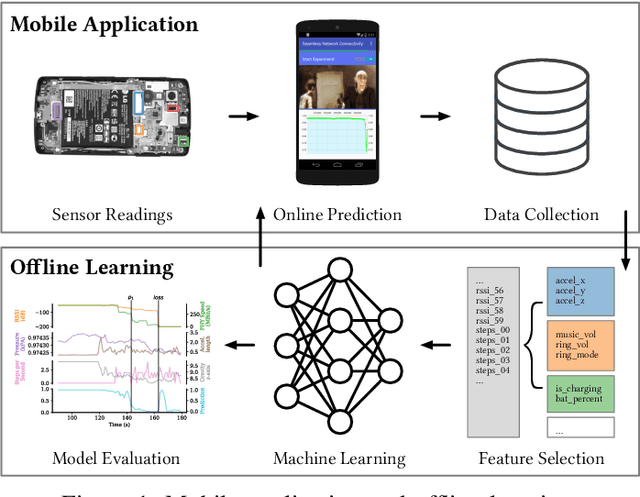
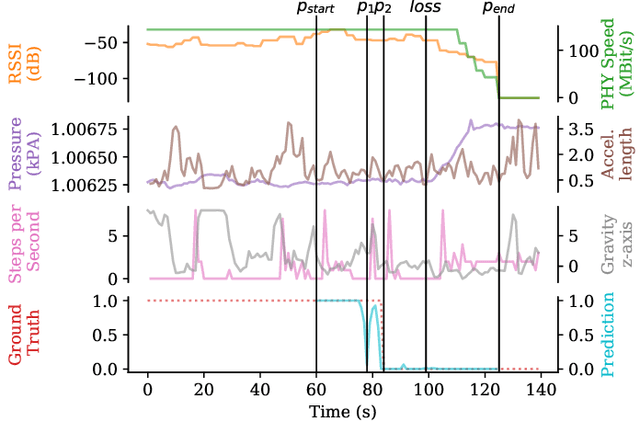
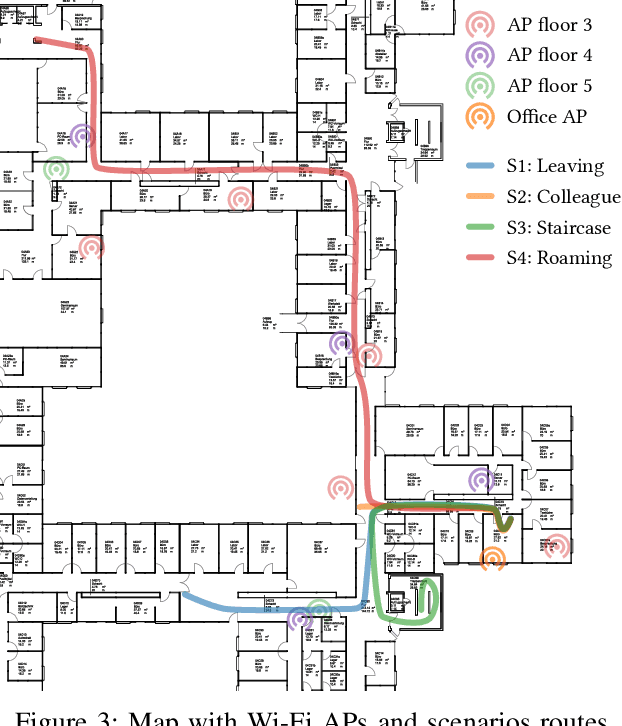
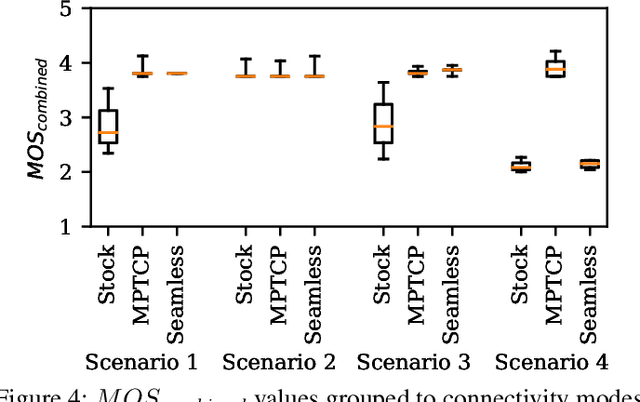
Abstract:We present a novel data-driven approach to perform smooth Wi-Fi/cellular handovers on smartphones. Our approach relies on data provided by multiple smartphone sensors (e.g., Wi-Fi RSSI, acceleration, compass, step counter, air pressure) to predict Wi-Fi connection loss and uses Multipath TCP to dynamically switch between different connectivity modes. We train a random forest classifier and an artificial neural network on real-world sensor data collected by five smartphone users over a period of three months. The trained models are executed on smartphones to reliably predict Wi-Fi connection loss 15 seconds ahead of time, with a precision of up to 0.97 and a recall of up to 0.98. Furthermore, we present results for four DASH video streaming experiments that run on a Nexus 5 smartphone using available Wi-Fi/cellular networks. The neural network predictions for Wi-Fi connection loss are used to establish MPTCP subflows on the cellular link. The experiments show that our approach provides seamless wireless connectivity, improves quality of experience of DASH video streaming, and requires less cellular data compared to handover approaches without Wi-Fi connection loss predictions.
Investigating Correlations of Inter-coder Agreement and Machine Annotation Performance for Historical Video Data
Jul 24, 2019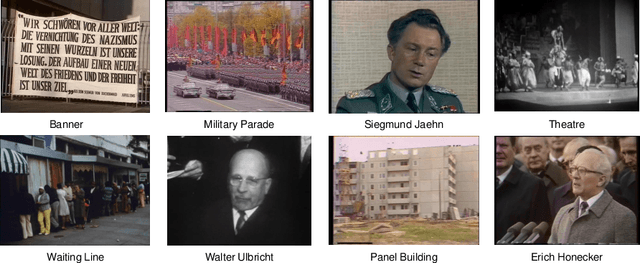
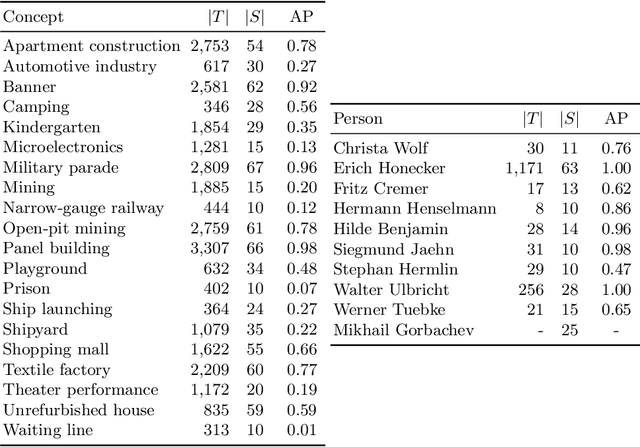
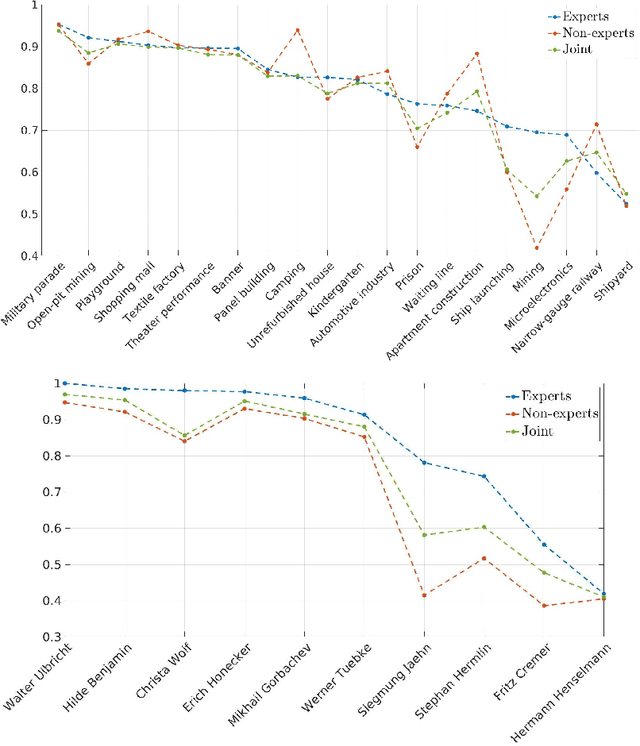
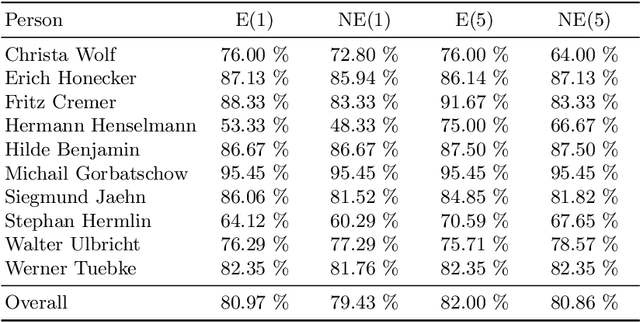
Abstract:Video indexing approaches such as visual concept classification and person recognition are essential to enable fine-grained semantic search in large-scale video archives such as the historical video collection of former German Democratic Republic (GDR) maintained by the German Broadcasting Archive (DRA). Typically, a lexicon of visual concepts has to be defined for semantic search. However, the definition of visual concepts can be more or less subjective due to individually differing judgments of annotators, which may have an impact on annotation quality and subsequently training of supervised machine learning methods. In this paper, we analyze the inter-coder agreement for historical TV data of the former GDR for visual concept classification and person recognition. The inter-coder agreement is evaluated for a group of expert as well as non-expert annotators in order to determine differences in annotation homogeneity. Furthermore, correlations between visual recognition performance and inter-annotator agreement are measured. In this context, information about image quantity and agreement are used to predict average precision for concept classification. Finally, the influence of expert vs. non-expert annotations acquired in the study are used to evaluate person recognition.
Detection and Visualization of Endoleaks in CT Data for Monitoring of Thoracic and Abdominal Aortic Aneurysm Stents
Feb 09, 2016Abstract:In this paper we present an efficient algorithm for the segmentation of the inner and outer boundary of thoratic and abdominal aortic aneurysms (TAA & AAA) in computed tomography angiography (CTA) acquisitions. The aneurysm segmentation includes two steps: first, the inner boundary is segmented based on a grey level model with two thresholds; then, an adapted active contour model approach is applied to the more complicated outer boundary segmentation, with its initialization based on the available inner boundary segmentation. An opacity image, which aims at enhancing important features while reducing spurious structures, is calculated from the CTA images and employed to guide the deformation of the model. In addition, the active contour model is extended by a constraint force that prevents intersections of the inner and outer boundary and keeps the outer boundary at a distance, given by the thrombus thickness, to the inner boundary. Based upon the segmentation results, we can measure the aneurysm size at each centerline point on the centerline orthogonal multiplanar reformatting (MPR) plane. Furthermore, a 3D TAA or AAA model is reconstructed from the set of segmented contours, and the presence of endoleaks is detected and highlighted. The implemented method has been evaluated on nine clinical CTA data sets with variations in anatomy and location of the pathology and has shown promising results.
Preoperative Volume Determination for Pituitary Adenoma
Feb 05, 2016Abstract:The most common sellar lesion is the pituitary adenoma, and sellar tumors are approximately 10-15% of all intracranial neoplasms. Manual slice-by-slice segmentation takes quite some time that can be reduced by using the appropriate algorithms. In this contribution, we present a segmentation method for pituitary adenoma. The method is based on an algorithm that we have applied recently to segmenting glioblastoma multiforme. A modification of this scheme is used for adenoma segmentation that is much harder to perform, due to lack of contrast-enhanced boundaries. In our experimental evaluation, neurosurgeons performed manual slice-by-slice segmentation of ten magnetic resonance imaging (MRI) cases. The segmentations were compared to the segmentation results of the proposed method using the Dice Similarity Coefficient (DSC). The average DSC for all datasets was 75.92% +/- 7.24%. A manual segmentation took about four minutes and our algorithm required about one second.
Cube-Cut: Vertebral Body Segmentation in MRI-Data through Cubic-Shaped Divergences
Jul 22, 2014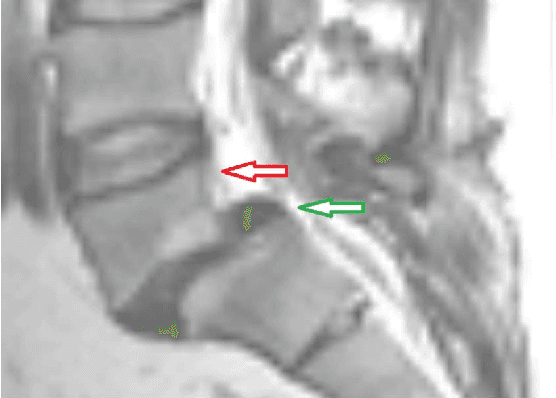
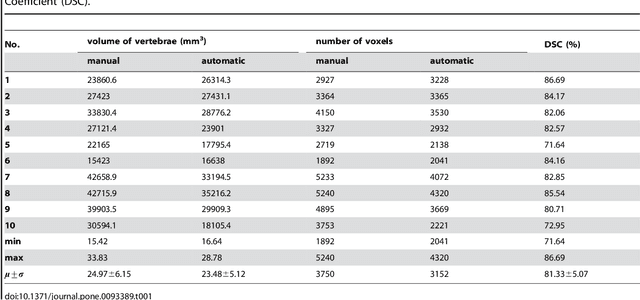
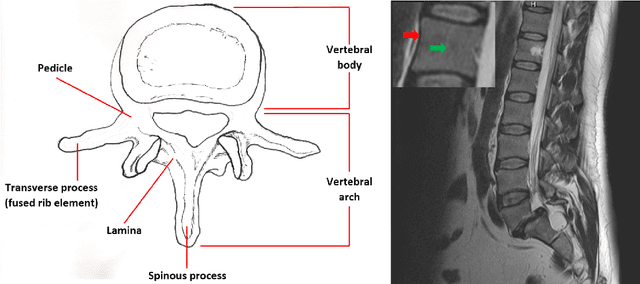

Abstract:In this article, we present a graph-based method using a cubic template for volumetric segmentation of vertebrae in magnetic resonance imaging (MRI) acquisitions. The user can define the degree of deviation from a regular cube via a smoothness value Delta. The Cube-Cut algorithm generates a directed graph with two terminal nodes (s-t-network), where the nodes of the graph correspond to a cubic-shaped subset of the image's voxels. The weightings of the graph's terminal edges, which connect every node with a virtual source s or a virtual sink t, represent the affinity of a voxel to the vertebra (source) and to the background (sink). Furthermore, a set of infinite weighted and non-terminal edges implements the smoothness term. After graph construction, a minimal s-t-cut is calculated within polynomial computation time, which splits the nodes into two disjoint units. Subsequently, the segmentation result is determined out of the source-set. A quantitative evaluation of a C++ implementation of the algorithm resulted in an average Dice Similarity Coefficient (DSC) of 81.33% and a running time of less than a minute.
A Ray-based Approach for Boundary Estimation of Fiber Bundles Derived from Diffusion Tensor Imaging
Oct 23, 2013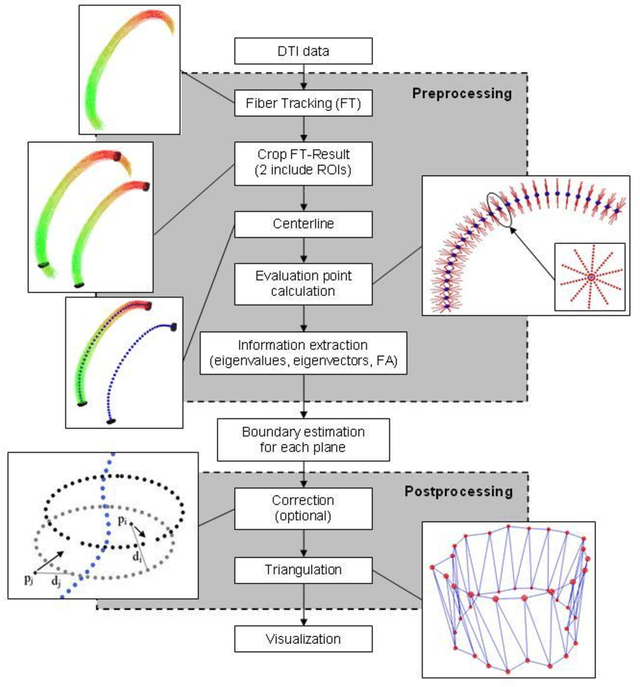
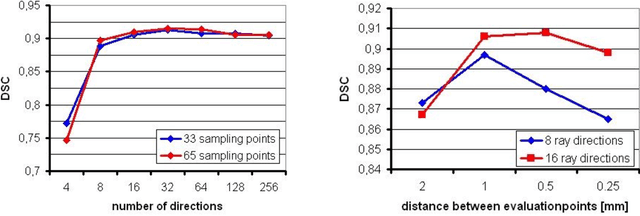
Abstract:Diffusion Tensor Imaging (DTI) is a non-invasive imaging technique that allows estimation of the location of white matter tracts in-vivo, based on the measurement of water diffusion properties. For each voxel, a second-order tensor can be calculated by using diffusion-weighted sequences (DWI) that are sensitive to the random motion of water molecules. Given at least 6 diffusion-weighted images with different gradients and one unweighted image, the coefficients of the symmetric diffusion tensor matrix can be calculated. Deriving the eigensystem of the tensor, the eigenvectors and eigenvalues can be calculated to describe the three main directions of diffusion and its magnitude. Using DTI data, fiber bundles can be determined, to gain information about eloquent brain structures. Especially in neurosurgery, information about location and dimension of eloquent structures like the corticospinal tract or the visual pathways is of major interest. Therefore, the fiber bundle boundary has to be determined. In this paper, a novel ray-based approach for boundary estimation of tubular structures is presented.
* 5 pages, 2 figures, 7 references
Determination, Calculation and Representation of the Upper and Lower Sealing Zones During Virtual Stenting of Aneurysms
Oct 21, 2013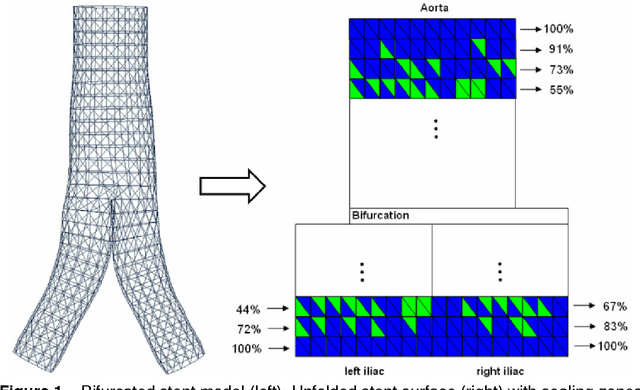
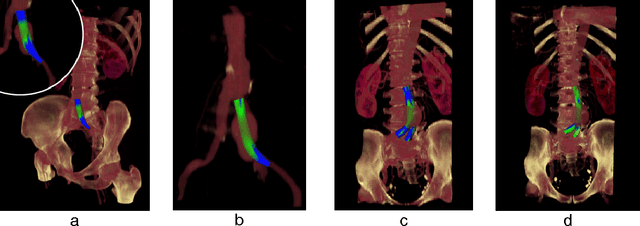
Abstract:In this contribution, a novel method for stent simulation in preoperative computed tomography angiography (CTA) acquisitions of patients is presented where the sealing zones are automatically calculated and visualized. The method is eligible for non-bifurcated and bifurcated stents (Y-stents). Results of the proposed stent simulation with an automatic calculation of the sealing zones for specific diseases (abdominal aortic aneurysms (AAA), thoracic aortic aneurysms (TAA), iliac aneurysms) are presented. The contribution is organized as follows. Section 2 presents the proposed approach. In Section 3, experimental results are discussed. Section 4 concludes the contribution and outlines areas for future work.
* 4 pages, 2 figures, 10 references
GBM Volumetry using the 3D Slicer Medical Image Computing Platform
Mar 05, 2013
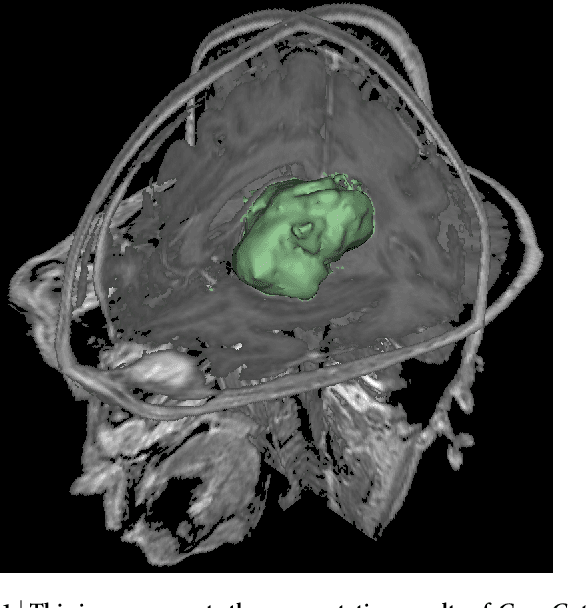

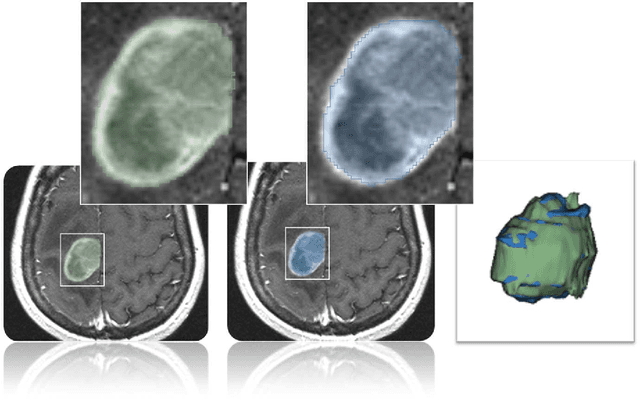
Abstract:Volumetric change in glioblastoma multiforme (GBM) over time is a critical factor in treatment decisions. Typically, the tumor volume is computed on a slice-by-slice basis using MRI scans obtained at regular intervals. (3D)Slicer - a free platform for biomedical research - provides an alternative to this manual slice-by-slice segmentation process, which is significantly faster and requires less user interaction. In this study, 4 physicians segmented GBMs in 10 patients, once using the competitive region-growing based GrowCut segmentation module of Slicer, and once purely by drawing boundaries completely manually on a slice-by-slice basis. Furthermore, we provide a variability analysis for three physicians for 12 GBMs. The time required for GrowCut segmentation was on an average 61% of the time required for a pure manual segmentation. A comparison of Slicer-based segmentation with manual slice-by-slice segmentation resulted in a Dice Similarity Coefficient of 88.43 +/- 5.23% and a Hausdorff Distance of 2.32 +/- 5.23 mm.
* 7 pages, 6 figures, 2 tables, 1 equation, 43 references
 Add to Chrome
Add to Chrome Add to Firefox
Add to Firefox Add to Edge
Add to Edge